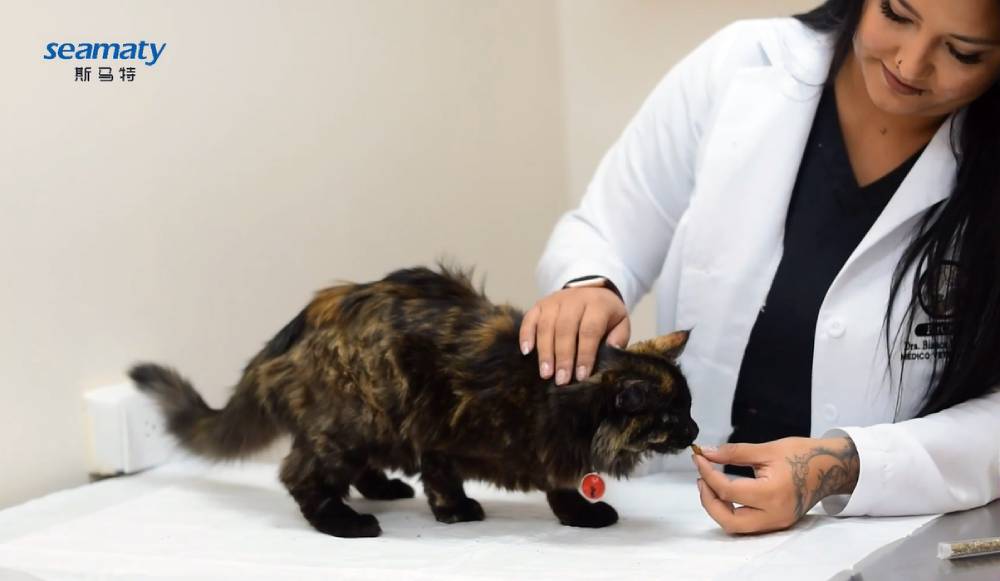release time:2021-04-20 15:10:42
Just like us people, pets also need regular physical examinations. Animals can not speak and can tolerate pain.
It is helpful for them to do physical examination in pet hospitals, and timely screening of diseases is helpful to disease prevention and monitoring.
The most common blood tests in pet hospitals are biochemical tests and routine blood tests.
Veterinary biochemical instrument is an
instrument for biochemical examination of animals. Before routine physical
examination and sterilization surgery, pet doctors will recommend biochemical
examination.
What is the difference between blood routine
and biochemistry?
Blood test can check diseases caused by
bacterial infections, viral infections, parasites, allergies, anemia,
dehydration, etc. The main observations are 3 sets of data such as red blood
cells, white blood cells, and platelets.
Biochemical and electrolyte tests can show
whether the pet’s liver, kidney, and pancreas function normally.
What items can the veterinary biochemical
analyzer detect?
Biochemical examination can be subdivided into different items:
For example, there are ten items in biochemistry, twelve items in biochemistry, 16 items in biochemistry, and a complete set of biochemistry items.
Generally, it can detect pet liver function, kidney function, blood gas electrolyte, etc.
Biochemical Testing Group
In clinical biochemical tests, animals are
divided into different groups according to the physiology or function of the
animal's body organ system.
1.Liver: The liver group mainly includes three
parts: enzyme leakage from liver cells, bile-retaining enzymes, and bilirubin.
2.Kidney: This group of kidneys is mainly to
test blood urea nitrogen and creatinine
3.Pancreas: The pancreas also depends on whether
there is pancreatin leaking out. When pancreatin leaks out, it will cause
peritonitis, cause fat necrosis, and fat saponification. Clinically, amylase
and lipase can be tested.
4.Protein: Protein can measure total protein and
albumin, and total protein minus albumin is globulin.
5.Minerals: Minerals contain calcium, phosphorus
or magnesium. Because magnesium ions are sometimes measured with electrodes,
they can also be placed in the group of minerals or electrolytes.
6.Acid-base: The most important thing is to
measure the bicarbonate in the blood.
7.Electrolytes: electrolytes include sodium,
potassium, chlorine and magnesium
8.Iron: Clinically, iron in serum can be measured.
9.Muscle: The most important part of this group
of muscles is to detect creatine kinase (CK) aspartate aminotransferase (AST)
alanine aminotransferase (ALT), lactate dehydrogenase (LDH)
10. Fat: Fat metabolism is mainly to detect
cholesterol and triglycerides.
11. Carbohydrates: The most important part of
carbohydrate metabolism is to let us know if animals have diabetes.

2021-04-22
The blood coagulation reagent with four indexes launched by Chengdu Seamaty Technology Co., Ltd. used with SMT-120V, an automatic biochemical analyzer, is suitable for preoperative examination of pets, which can help doctors to understand whether the animal's hemostatic function is defective. The preoperative examination can prevent intraoperative bleeding.

2021-04-22
Compared to human medical testing, abnormal samples account for a larger number of blood samples that can be collected by veterinarians. When collecting blood, what should be done with abnormal samples such as lipemia, hemolysis, jaundice and coagulation?

2021-04-21
Pet biochemical test is an indispensable tool for veterinarians to diagnose diseases, but there are many factors that affect the accuracy of the results. This article summarizes some influencing factors.